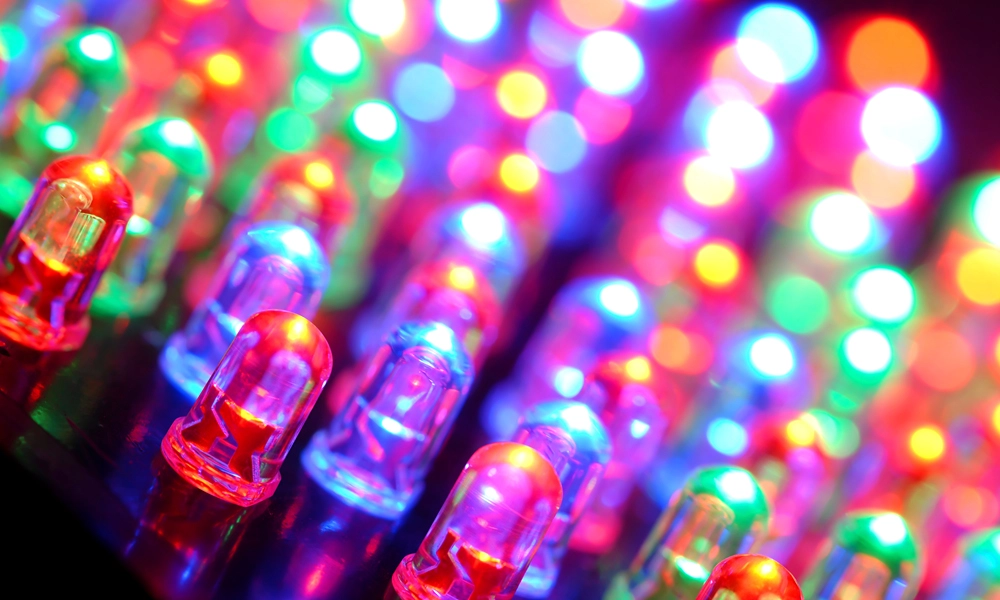The Luminous Revolution: Exploring the Power and Potential of LEDs
Light Emitting Diodes, or LEDs, have fundamentally reshaped the landscape of illumination, moving far beyond their initial role as simple indicator lights to become the dominant force in modern lighting. This revolutionary technology offers an unparalleled combination of energy efficiency, longevity, and versatility, driving significant benefits across residential, commercial, and industrial sectors. From reducing global energy consumption to enabling cutting-edge smart home systems and even impacting human well-being, the continuous evolution of LED technology is illuminating a brighter, more sustainable future.
The Genesis and Evolution of LED Technology
The journey of LEDs began in the early 20th century, but it wasn’t until the 1960s that the first practical visible-spectrum LED was developed, emitting red light. The real breakthrough came with the invention of high-brightness blue LEDs in the early 1990s, which, when combined with red and green, allowed for the creation of white light. This pivotal development earned its inventors the Nobel Prize in Physics in 2014 and unlocked the vast potential of LED lighting for general illumination.
Since then, LED technology has advanced at a remarkable pace. Early limitations in brightness and color rendering have been overcome through continuous innovation in materials science and manufacturing processes. Today’s LEDs boast exceptional efficiency, capable of converting up to 90% of electrical energy into light, drastically reducing wasted heat. Furthermore, advancements in thermal management have extended their lifespan significantly, with many LED products lasting 25,000 to 50,000 hours or even more, outperforming traditional incandescent bulbs by up to 40 times.
Unpacking the Benefits: Why LEDs Outshine Traditional Lighting
The widespread adoption of LEDs is driven by a multitude of compelling advantages they hold over conventional lighting solutions like incandescent and fluorescent bulbs.
One of the most significant benefits is energy efficiency. LEDs consume substantially less electricity to produce the same amount of light. For instance, a 10-watt LED bulb can provide the same illumination as a 60-watt incandescent bulb, translating into substantial savings on electricity bills. This efficiency not only reduces operational costs for homeowners and businesses but also contributes significantly to lowering overall energy demand and greenhouse gas emissions on a global scale.
Exceptional longevity is another hallmark of LED technology. Unlike traditional bulbs that burn out, LEDs experience a gradual decline in brightness over a very long period. This extended lifespan dramatically reduces the frequency of replacements and associated maintenance costs, particularly in large-scale applications such as street lighting or commercial buildings. This characteristic also contributes to a reduction in waste generated from discarded bulbs, promoting a more sustainable approach to lighting.
Beyond efficiency and lifespan, LEDs offer superior durability and versatility. Built with robust components, they are highly resistant to shock, vibrations, and temperature fluctuations, making them ideal for both indoor and outdoor applications, including challenging environments like cold storage or industrial settings. Their small size and directional light output also provide immense design flexibility, allowing for innovative lighting solutions, from compact fixtures and decorative strips to high-performance stadium lighting and integrated architectural elements. This flexibility is explored further by industry leaders such as Philips Lighting, who continuously push the boundaries of design.
Furthermore, LEDs produce minimal heat and virtually no UV emissions. This makes them safer to handle and less likely to damage heat-sensitive objects, making them ideal for museums, art galleries, and retail displays. The absence of mercury, a hazardous material found in fluorescent bulbs, also makes LEDs an environmentally friendlier choice, simplifying disposal and reducing environmental contamination risks. For more on the environmental benefits, refer to studies and reports by organizations like the U.S. Department of Energy.
The Expanding Sphere of LED Applications
The inherent advantages of LEDs have led to their integration across a vast array of applications, transforming how we light our world.
In residential settings, LEDs are now the standard for general illumination, offering homeowners significant energy savings and longer-lasting bulbs. Smart LED systems, controllable via smartphones and integrated with home automation platforms, allow for personalized lighting experiences, adjusting brightness, color temperature, and even setting schedules for enhanced convenience and efficiency.
Commercial and industrial spaces have embraced LEDs for their cost-effectiveness and performance. From office buildings and retail stores to warehouses and factories, LED lighting improves visibility, reduces operational overheads, and enhances employee productivity and safety. Street lighting and public spaces have also seen a massive transition to LEDs, leading to brighter, safer environments while dramatically cutting municipal energy expenditures. Companies like GE Current, a Daintree Company offer a wide range of commercial LED solutions.
Beyond general illumination, LEDs are crucial in specialized applications. They are extensively used in automotive lighting (headlights, tail lights, interior lighting), large-scale displays (billboards, sports scoreboards), and signal indicators (traffic lights, emergency vehicle lights). The medical field utilizes LEDs in various diagnostic and therapeutic devices, while horticulture benefits from specialized LED grow lights that optimize plant growth by providing specific light spectra.
The Future is Bright: Emerging Trends in LED Technology
The innovation in LED technology shows no signs of slowing down. Several exciting trends are poised to further revolutionize the lighting industry and beyond:
Human-Centric Lighting (HCL) is gaining significant traction, focusing on improving human well-being by mimicking natural light cycles. HCL systems adjust light intensity and color temperature throughout the day to synchronize with the body’s circadian rhythms, promoting alertness during the day and relaxation in the evening. This technology is expected to see widespread adoption in offices, healthcare facilities, and educational institutions, aiming to reduce eye strain, improve sleep quality, and enhance overall mental well-being.
The integration of LEDs with the Internet of Things (IoT) will continue to expand, leading to even more sophisticated and interconnected smart lighting solutions. This includes adaptive lighting systems with integrated sensors that dynamically adjust lighting based on occupancy, daylight availability, and even individual preferences, further optimizing energy consumption and creating truly intelligent environments.
Micro-LEDs represent a cutting-edge development, offering higher resolution and efficiency in tiny packages. While currently more expensive to produce, as manufacturing costs decrease, micro-LEDs are expected to revolutionize ultra-high-resolution displays for televisions, smartphones, and augmented reality devices.
Finally, ongoing research into sustainable manufacturing and materials for LEDs will ensure their environmental footprint continues to shrink. This includes efforts to reduce the use of hazardous materials, improve recyclability, and explore energy harvesting capabilities, making LED lighting an even more environmentally responsible choice for the future.
Conclusion: A Luminous Path Forward
LED technology has evolved from a niche component to a pervasive and indispensable part of our modern world. Its unparalleled energy efficiency, extended lifespan, and remarkable versatility have driven a global shift towards more sustainable and intelligent lighting solutions. As research and development continue to push the boundaries of what LEDs can achieve, from enhancing human well-being through human-centric lighting to enabling advanced IoT integration and micro-LED displays, the future of illumination promises to be even more luminous, efficient, and interconnected. Embracing LED technology is not just about saving energy; it’s about investing in a brighter, more sustainable, and technologically advanced future for all.
Check our latest posts !
Click Here !



Pingback: Strawflowers: 10 Essential Tips for Growing Them